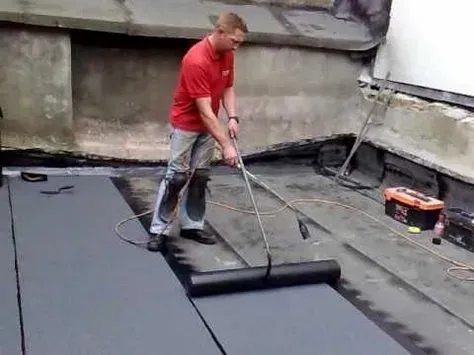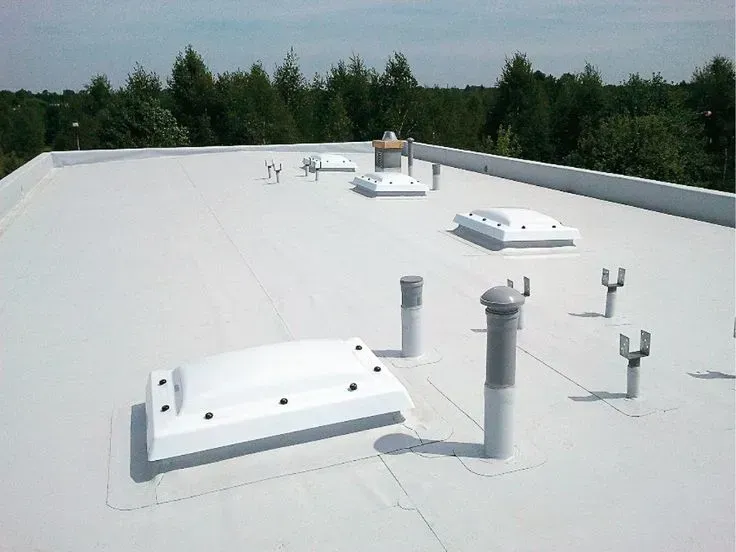
Flat roofing for installation of walk pads and safety surfacing services by Chicago Elite Commercial Flat Roofing
When it comes to flat roofing in Chicago, safety and durability are paramount, especially for commercial buildings that require regular rooftop access. At Chicago Elite Commercial Flat Roofing, we focus on installing walk pads and safety surfacing designed to protect both your roof and the people who need to navigate it. These critical additions prevent damage to the roofing membrane caused by foot traffic, while providing stable, slip-resistant surfaces for maintenance crews, inspectors, and other personnel.
Flat roofs face unique challenges, particularly in Chicago’s climate, where weather extremes and frequent inspections are common. Walk pads and safety surfacing act as a first line of defense, minimizing wear and tear on your roof and reducing the risk of accidents. Without these protective measures, foot traffic can lead to costly membrane punctures, leaks, and premature roof failure. Our installations help extends the life of your roof by distributing weight evenly and creating designated pathways that keep foot traffic controlled and safe.
With years of experience serving Chicago’s commercial roofing market, we understand the local building codes, weather conditions, and specific demands of flat roof systems. We use only high-quality materials engineered for durability and slip resistance, and our expert team ensures every installation is precise and compliant. Our goal is to provide you with a roofing solution that maintains the structural integrity of your building while safeguarding your employees and contractors.
Benefits of Flat Roofing for Walk Pads and Safety Surfacing
Flat roofing provides a practical surface for installing walk pads and safety surfacing, offering advantages in protection, accessibility, and durability. These features help reduce damage risk while making rooftop maintenance safer and extending the roof’s usable life.
Enhanced Roof Protection
Flat roofs allow us to install walk pads that shield the roofing membrane from frequent foot traffic. These pads reduce punctures and surface wear by cushioning impacts and offering a slip-resistant surface.
Protecting the membrane prevents leaks and costly repairs. Properly installed safety surfacing on flat roofs reinforces the structure and minimizes damage from maintenance activities or equipment movement.
This protection is vital for single-ply membranes, which are more vulnerable to punctures. Walk pads act as a barrier, preserving the roof’s integrity longer and maintaining the building’s weather-resistance.

Improved Safety and Accessibility
Walk pads create defined paths on flat roofs, enhancing safety for workers and maintenance personnel. The textured surfaces improve grip, lowering the chance of slips and falls, especially in wet or icy conditions.
With designated walkways, we can safely access roof equipment without harming the roofing material. This improves the efficiency of inspections, repairs, and routine maintenance.
Installing safety surfacing also meets many building codes and insurance requirements. It demonstrates a proactive approach to workplace safety and risk management for commercial properties.
Increased Longevity of Roofing Systems
By protecting the membrane and limiting roof surface damage, walk pads and safety surfacing help extend the lifespan of flat roofing systems. Less frequent repairs result in lower maintenance costs over time.
The reinforced surface reduces wear caused by foot traffic and equipment movement. This advantage is especially important in urban environments like Chicago, where flat commercial roofs face constant use.
We recognize that preserving the roof’s condition also maintains energy efficiency and reduces the need for full system replacements, benefiting both budgets and building performance.
Installation Process by Chicago Elite Commercial Flat Roofing
Our installation process ensures durability, safety, and compliance with industry standards. We focus on thorough evaluation, precise material handling, and expert techniques to meet the demands of flat roofs in commercial environments.
Site Assessment and Project Planning
We start by inspecting the existing roof condition, checking for structural integrity and drainage issues. This helps us identify the best locations for walk pads and safety surfacing to prevent wear and improve safety.
Our team also assesses potential roof traffic patterns and weather exposure. This planning stage allows us to customize the installation layout to suit the building’s specific needs.
We create a detailed project plan including timelines, required materials, and safety precautions. This reduces disruptions and ensures the installation proceeds smoothly.
Material Selection and Preparation
We select materials based on durability, slip resistance, and compatibility with the roof membrane. Common options include commercial-grade walk pads made from shock-absorbing rubber or thermoplastic.
Materials are cut to fit designated areas precisely. We prepare the roof surface by cleaning and drying it to maximize adhesion and longevity of the installation.
Our choice also considers Chicago’s climate factors, such as freeze-thaw cycles, ensuring materials maintain performance over time without cracking or detaching.
Installation Techniques and Best Practices
We employ methods that secure walk pads without damaging the roof membrane, often using mechanical fasteners combined with adhesives suited to flat roofing materials.
Pads are spaced and positioned to guide foot traffic effectively, reducing wear on critical roof areas. We follow manufacturer guidelines and safety codes strictly.
Final inspection verifies pad adhesion and alignment. Our installation minimizes future maintenance needs while enhancing roof safety and durability.
Choosing the Right Walk Pads and Safety Surfacing
Selecting walk pads and safety surfacing involves balancing materials, durability, and safety features tailored to flat roof conditions. Understanding the types available and key factors like slip resistance helps us ensure the roof's protection and user safety.

Types of Walk Pads Available
We typically work with walk pads made from flexible, impact-resistant materials that withstand frequent foot traffic and equipment movement. Common options include rubber and PVC-based pads, often delivered in rolls for easy installation.
Pads may feature textured surfaces designed to reduce wear on roofing membranes while providing designated walkways. Some are specifically formulated to resist water absorption, preventing damage in wet conditions.
Choosing pads depends on roof membrane compatibility, weight, and environmental exposure. We prioritize pads that maintain integrity over time without damaging underlying roofing materials.
Slip Resistance and Durability Factors
Slip resistance is critical to prevent accidents, especially in wet or icy conditions. We select pads with textured, non-slip surfaces to enhance traction for workers and maintenance personnel.
Durability depends on the pad’s ability to resist UV rays, chemicals, and mechanical stress. Pads made from high-quality PVC or reinforced rubber offer long-term resistance to these factors.
We also consider the pad’s thickness and flexibility, ensuring it absorbs impact without cracking or deforming. Proper installation location further influences longevity by avoiding weak roof areas and ensuring stable footing.
Frequently Asked Questions
Protecting your flat roof traffic areas with durable walk pads and slip-resistant safety surfacing is key to extending your roof’s life and keeping your team safe. Below are answers to the most common questions about installing these systems on commercial flat roofs throughout Chicago, IL.
What are walk pads and safety surfacing, and why are they important?
Walk pads are thick, non-abrasive pads installed in high-traffic zones (like around HVAC units) to protect the roof membrane from foot traffic. Safety surfacing is a textured coating that enhances slip resistance across larger roof areas. Together, they prevent premature membrane wear and reduce slip hazards in Chicago’s wet or icy conditions.
Which materials work best for Chicago’s flat roofs?
We typically use high-density rubber walk pads rated for UV exposure and EPDM/PVC-compatible safety coatings with grit additives. These materials resist extreme temperature swings—from lake-effect cold snaps to brutal summer heat—while bonding seamlessly to common commercial membranes.
Do walk pads and safety surfacing meet Chicago building codes and OSHA standards?
Yes. Our installations comply with Chicago’s Municipal Code requirements for rooftop work zones and meet OSHA’s fall-protection recommendations by providing at least a Class II slip resistance rating on safety surfacing.
How long does installation take on a standard 10,000 sq ft roof?
For a 10,000 sq ft roof with designated walk-pad pathways and full-area safety surfacing, installation typically takes 2–3 days, weather permitting. We plan around Chicago’s seasonal weather forecasts to minimize delays.
Can these systems handle heavy foot traffic and equipment movement?
Absolutely. Our rubber walk pads are tested for static loads up to 5,000 psi, and the safety surfacing withstands rolling loads from maintenance carts and hand trucks without cracking or delaminating.
